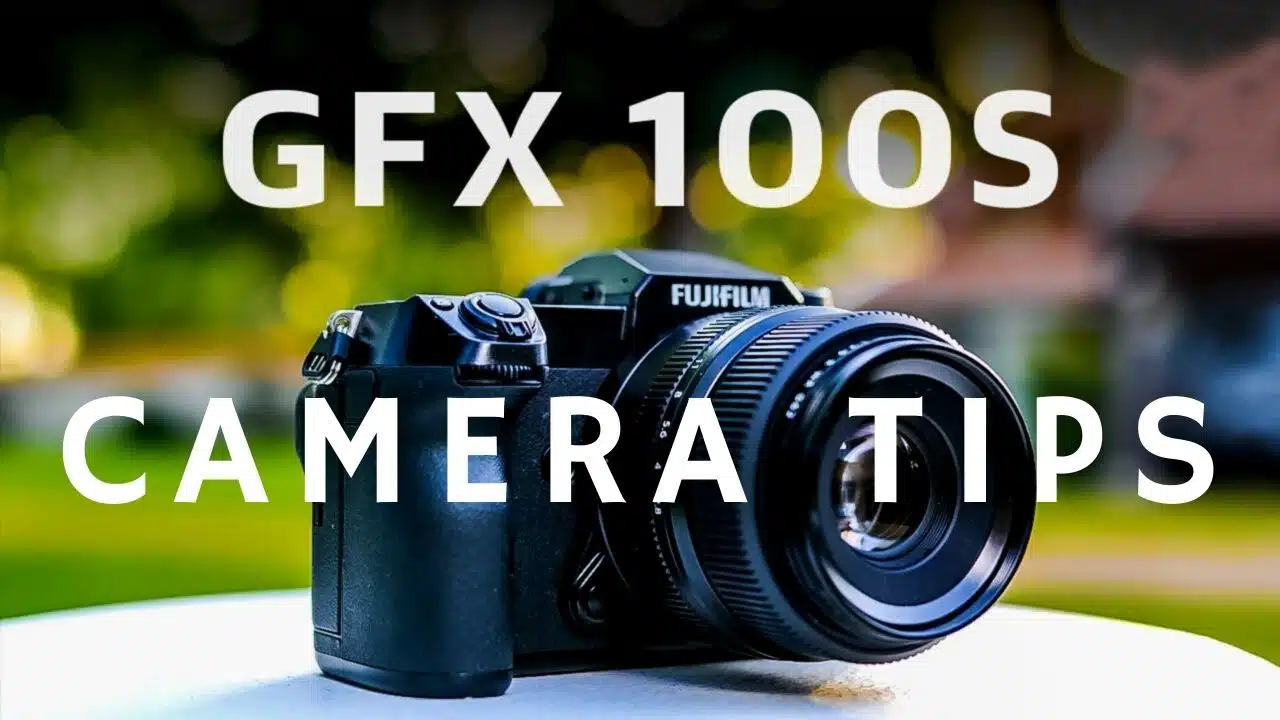Here are 5 tips for using your new Fujifilm GFX 100S camera. 5 Tips for Fujifilm GFX 100S. DSLR Camera tips for new users of Fujifilm GFX100S. Five Tips & Tricks for using your new Fujifilm GFX 100S camera.
Table of Contents
Top 5 Fujifilm Camera Tips
Set RAW Compression to 16-Bit LOSSLESS
Now my first camera tip is designed to save you file space when shooting those large medium formats, RAW files. And that is to set your RAW recording to lossless 16-bit. The camera offers several different RAW compression options. And if you choose uncompressed 16-bit, each RAW file will be around 208 megabytes.
However, if you set your RAW compression to 16-bit lossless, each RAW file now is only 140 megabytes.
This is quite a savings and, technically, lossless compressed is lossless, right? I mean, meaning you should lose no quality whatsoever with your RAW file but you’ll have a much smaller file size. And this will allow you to get more shots on your SD card.
Now be sure to check that your specific editing software does support lossless compressed Fujifilm RAF files. Photoshop, Lightroom, Capture One, they all do. So if you use those, you’re fine.
Use ‘C’ to Adjust Aperture Via Command Dial
For my next Fujifilm camera tip, if you have a GF lens with a C marker on the aperture ring, You might want to consider using it, particularly if you’re coming into the Fujifilm GFX system from a different camera brand.
What it allows you to do is transfer control of the aperture ring to your front command dial. And you can use that to set the aperture if you prefer. Simply rotate the lens aperture ring and set it to C. Once you have it in C, simply press in on the front command dial. If you long-press it and hold it in, you’re going to see the menu.
So, don’t long-press it, instead press it quickly once. Like this, boom, look at that. See that? When you do, it’ll toggle from F to ISO. So when it’s in F-stop, now you can rotate your command dial and look at how the aperture is changing.
Use ‘Shooting Standby Mode’
My third Fujifilm camera tip has to do with power settings. If you go into the wrench into power management, you’re probably familiar with auto power-off, and that will turn off the camera after a set time period to save battery life. Once it does that, it sometimes takes a second to get it back on.
So let’s say you have it set for two minutes. The camera shuts off after two minutes and then you tap the shutter release. The camera has to kind of turn itself back on. And that extra little bit of time might be too much and you may miss a shot.
So instead of using auto power-off, I turn that off and I turn shooting standby mode on. And what that does is that puts it in a standby mode. It’s still drawing a little bit of power but it’s much faster to come back to life when you need to continue shooting.
And it’s perfect for that kind of shooting situation where you’re taking a few shots and then there’s a pause for a bit. And then you need to grab a few more shots quickly, and then there’s a pause for a bit. It’s perfect for that. It’s a really nice feature I love about the GFX.
Set Internal Mic Adjustment to ‘Auto’
Number fourth Fujifilm camera tips have to do with a video set that I think is kind of important. If you go into your audio settings, you’ll notice that by default, it is set to zero decibels for both the internal and the external mic. And inside that, it’s set to manual.
The problem with it being set to the manual is that you may end up clipping your audio for most beginners on this camera if you’re not careful. What I recommend you do is at least set the internal one so that it’s set to automatic.
This way, the camera will control the audio levels automatically a little better and it may save your audio from clipping.
Obviously, if you’re using an external microphone, you’re gonna want to put it in manual and check your audio settings before you start shooting. But for a lot of run-and-gun situations where you may be using the built-in mic, it may be better and more effective to set it to auto.
Set Exposure Compensation Button as ON/OFF Switch
And my Fujifilm camera tips last tip has to do with ergonomics. You’ll notice that on the GFX 100S, they have the exposure compensation button. Now, when you first get your camera, under the default settings, you’ll notice that to change the exposure compensation, you have to hold down this button, while at the same time, rotating the rear command dial.
Now, depending upon your shooting needs, that could be a hassle, right? Having to kind of hold it down with this finger, while at the same time, press it in here, while you’re trying to do other, eh. If you go to the menu and you go into the button dial setting, there is a wonderful option right here. Exposure compensation button setting.
And you can change it from on when pressing, that’s the press at the same time while trying to turn, way of doing it.
You can change it from that to an on/off switch. Now it’s more like a toggle switch. You press it once. Boom. And now you can rotate just like this.
So you could be out shooting, and just rotating and not having to press and hold that in to activate it. I don’t know about you, but I find that a much better way of using the exposure comp button.
Conclusion
Well, thank you so much for reading Fujifilm camera tips. I hope you enjoyed 5 tips and tricks for Fujifilm camera tips



